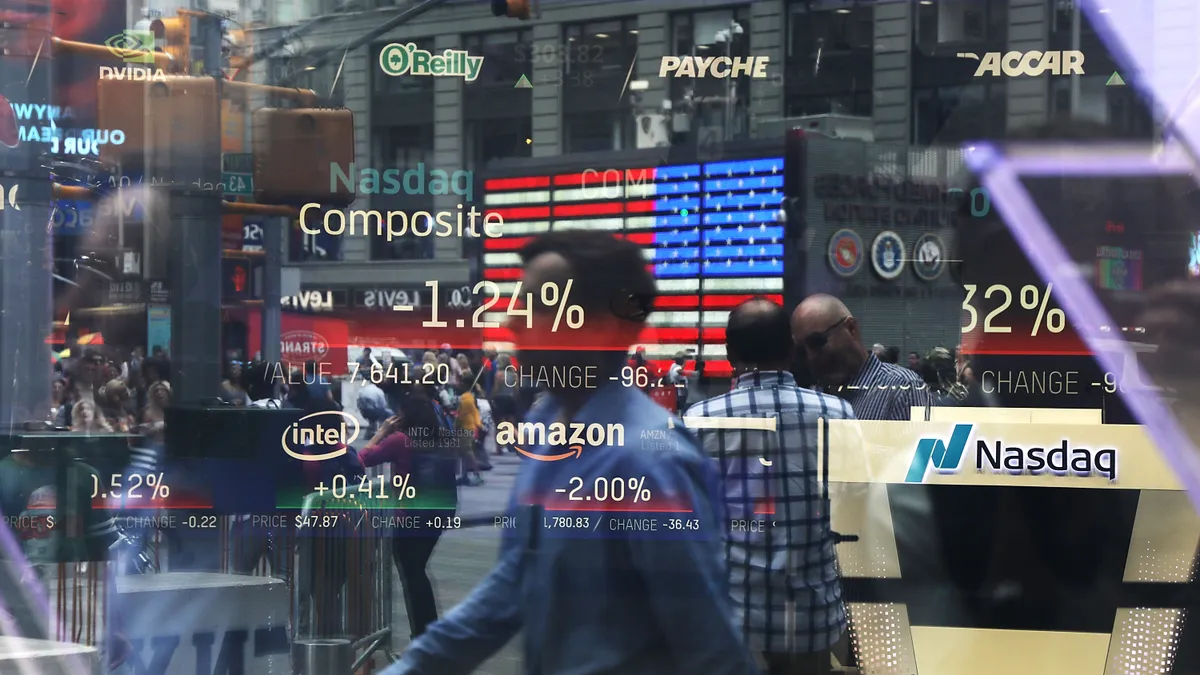Dive Brief:
- Slightly more U.S. executives (23%) are optimistic this quarter about the U.S. economy’s outlook over the next 12 months compared to last quarter when the gauge touched 12%, the lowest since the tail end of the last major recession in early 2009, according to a first quarter survey from the American Institue of CPAs and the Chartered Institute of Management Accountants conducted between Feb. 7 and March 1.
-
The percentage of the 438 respondents — mostly CEOs, CFOs and controllers — who were optimistic about their own firms’ outlook also ticked up to nearly half (47%) this quarter from 35% last quarter and 52% expecting their companies to expand in the next year.
- The executives’ workforce outlooks held roughly steady, with 68% saying the economy had not affected their staffing plans. But there were some signs of weakness: one-third (32%) said they were acting to cut labor costs, 17% of respondents said their firms have hiring freezes or have put the brakes on recruiting, 6% are relying more on outsourcing, 5% have had layoffs or are planning them, and 4% have cut shifts or hours.
Dive Insight:
The executives’ slightly less gloomy first quarter U.S. economy outlook comes as finance leaders are continuing to grapple this week with more mixed signals.
Federal Reserve Chairman Jerome Powell rattled markets Tuesday when he said that policymakers may need to raise borrowing costs higher than they forecast in December because the latest economic data has come in stronger than expected.
In a one-two Friday business news punch, regulators shut down of Silicon Valley Bank, marking one of the biggest bank failures in U.S. history, came on the same day that the Labor Department reported that employers added 311,000 jobs in February, more than expected.
Tom Hood, the AICPA & CIMA’s executive vice president for business engagement and growth, underscored the muddled hiring outlook they are seeing in a statement contained in a release on the survey.
Company hiring may be easing but instead of seeing broad layoffs, Hood stated most companies are adjusting with what he called “interim strategies to protect their workforce options,” Hood stated, noting that availability of skilled personnel was still a top challenge cited by respondents.
“This illustrates the unique pressures companies have been under the past year, with so much uncertainty clouding financial modeling,” Hood said in a statement.
Uncertainty is even swirling around the topline views of when or whether a recession will arrive, with goalposts on the likelihood and timing continually moving.
For example, some forecasters have predicted a recession early in 2023, with fourth quarter AICPA & CIMA survey finding that most U.S. business executives (51%) said the economy was already in a recession or would be by 2023.
But economists pushed back their forecast for the start date of a U.S. recession, with 28% predicting that a downturn will begin before April and 33% expecting a slump to start during the second quarter, the National Association for Business Economics found in a survey last month, CFO Dive previously reported.













